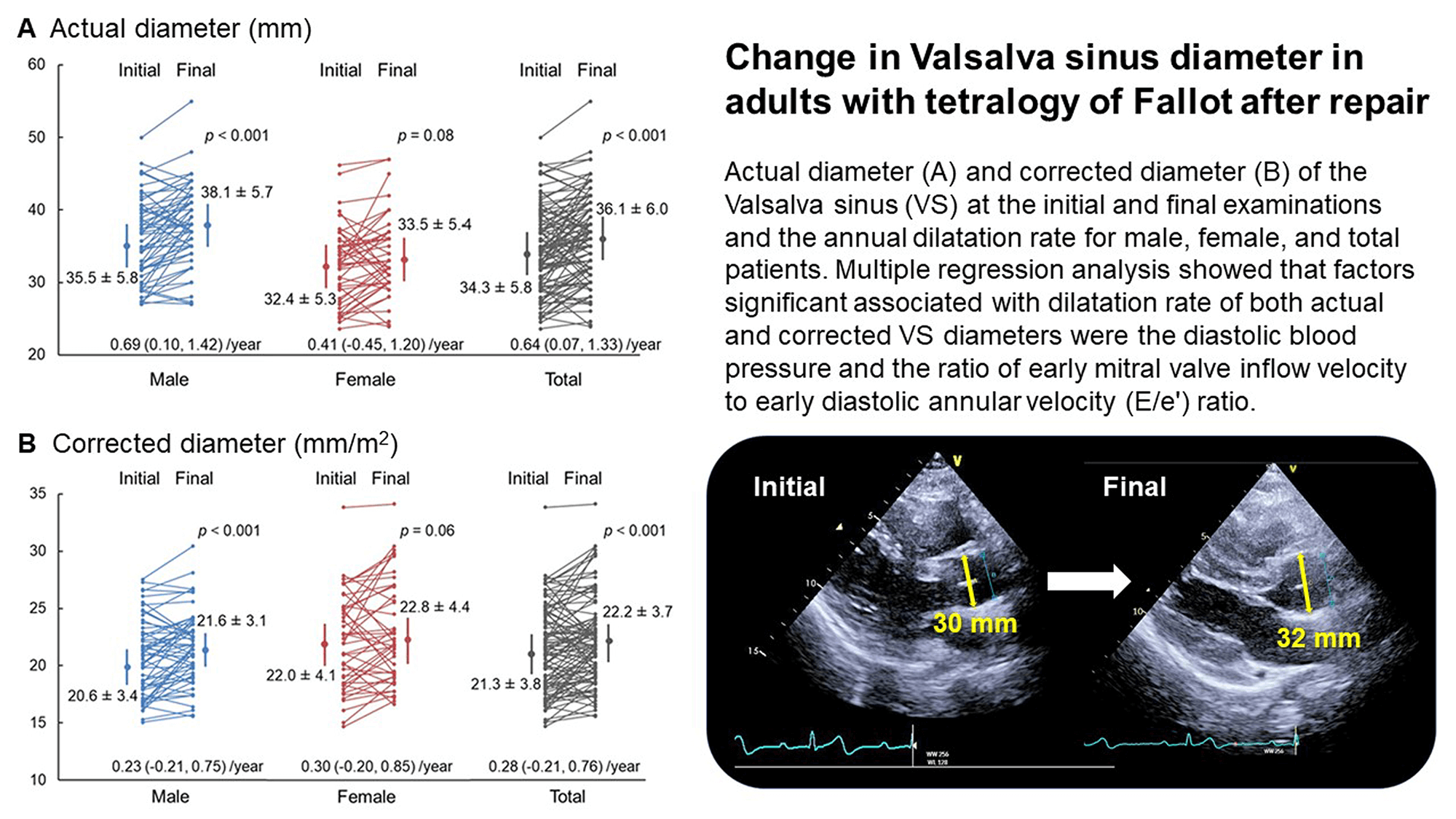 Open Access
Open Access
ARTICLE
Prospective Cohort Research of Aortic Root Dilatation after Surgical Repair in Adults with Tetralogy of Fallot (TRANSIT)
1 Department of Cardiology, Tokyo Metropolitan Children’s Medical Center, Tokyo, 183-8561, Japan
2 Department of Pediatric Cardiology, Sakakibara Heart Institute, Tokyo, 183-0003, Japan
3 Department of Adult Congenital Heart Disease, Chiba Cerebral and Cardiovascular Center, Chiba, 305-8576, Japan
4 Department of Adult Congenital Heart Disease, Chiba Kaihin Municipal Hospital, Chiba, 261-0003, Japan
5 Department of Cardiology, Faculty of Medicine, University of Tsukuba, Tsukuba, 305-8576, Japan
6 Cardiovascular Center, St. Luke’s International Hospital, Tokyo, 104-8560, Japan
7 Department of Cardiology, Tokyo Metropolitan Tama Medical Center, Tokyo, 183-8524, Japan
8 Division of Cardiology, National Center for Child Health and Development, Tokyo, 158-8531, Japan
9 Center for Preventive Medicine, Keio University School of Medicine, Tokyo, 160-0016, Japan
* Corresponding Author: Masaru Miura. Email:
Congenital Heart Disease 2024, 19(4), 351-362. https://doi.org/10.32604/chd.2024.051837
Received 16 March 2024; Accepted 03 June 2024; Issue published 31 October 2024
Abstract
Background: Aortic root dilatation occurs in adults with tetralogy of Fallot (TOF) after surgical repair, but the longitudinal changes are unclear. The main research aim is to determine the annual dilatation rate of aorta in adults with repaired TOF. Methods: The present, multicentric, prospective cohort study assessed the rate of aortic diameter change in adults aged 20 years or older with TOF, including pulmonary artery atresia, who underwent surgical repair. Clinical data, focusing on echocardiograms, were collected at three-year intervals from seven hospitals. Results: In total, 104 patients (58 males; median age: 29 years) were enrolled. The actual Valsalva sinus (VS) diameter was 34.3 ± 5.8 (mean ± standard deviation) and 36.1 ± 6.0 mm at the initial and final examinations, respectively, and the annual dilatation rate was 0.64 (0.07, 1.33) (median, interquartile) mm/year. The corrected diameter at the respective examination was 21.3 ± 3.8 and 22.2 ± 3.7 mm/m2, and the annual dilation rate was 0.28 (−0.21, 0.76) mm/m2/year. Multiple regression analysis showed that factors significant associated with dilatation rate of actual VS diameter were the diastolic blood pressure (standardized coefficient −0.22; p = 0.04), cardiothoracic ratio (0.28; 0.02), and the ratio of early mitral valve inflow velocity to early diastolic annular velocity (E/e′) ratio (0.31; 0.004). Factors significantly associated with corrected VS diameter were diastolic blood pressure (−0.25; 0.02) and the E/e′ ratio (0.34; 0.001). Conclusions: In adults with repaired TOF, the rate of dilatation of the aortic diameter was associated with decreased diastolic blood pressure and left ventricular diastolic dysfunction, possibly reflecting decreased aortic wall elasticity.Graphic Abstract

Keywords
Cite This Article
 Copyright © 2024 The Author(s). Published by Tech Science Press.
Copyright © 2024 The Author(s). Published by Tech Science Press.This work is licensed under a Creative Commons Attribution 4.0 International License , which permits unrestricted use, distribution, and reproduction in any medium, provided the original work is properly cited.


 Submit a Paper
Submit a Paper Propose a Special lssue
Propose a Special lssue View Full Text
View Full Text Download PDF
Download PDF Downloads
Downloads
 Citation Tools
Citation Tools
